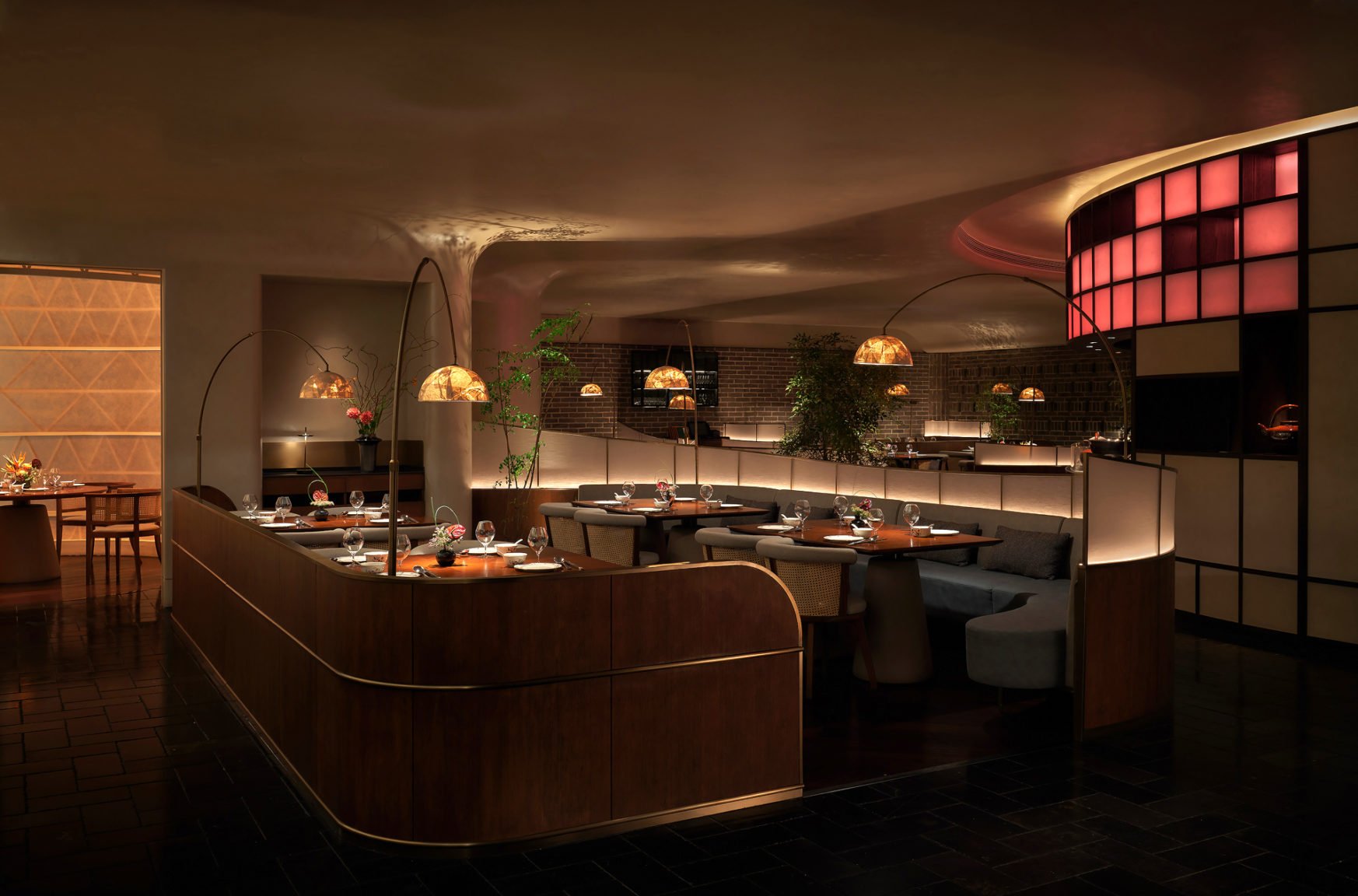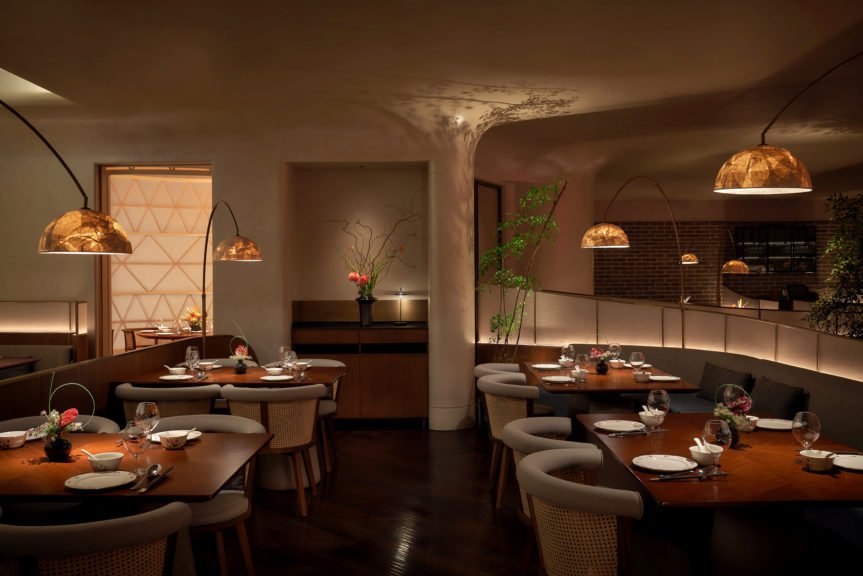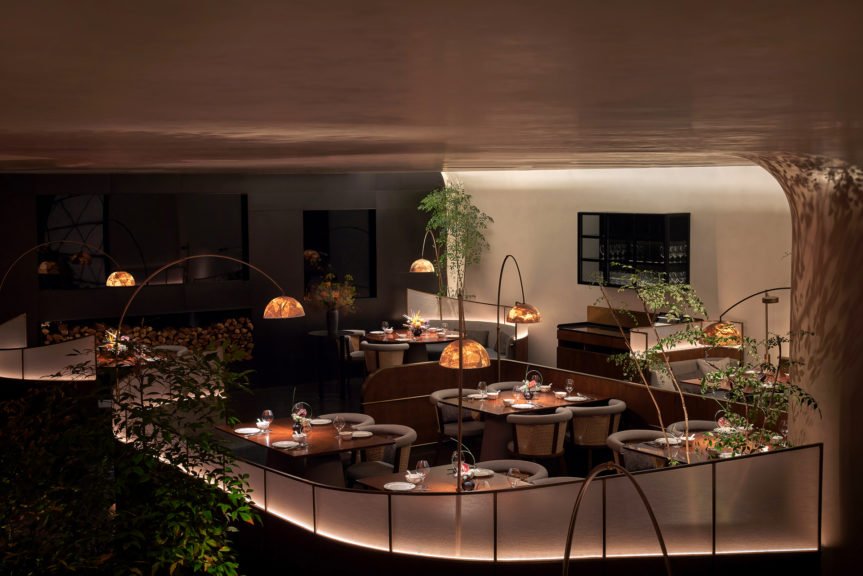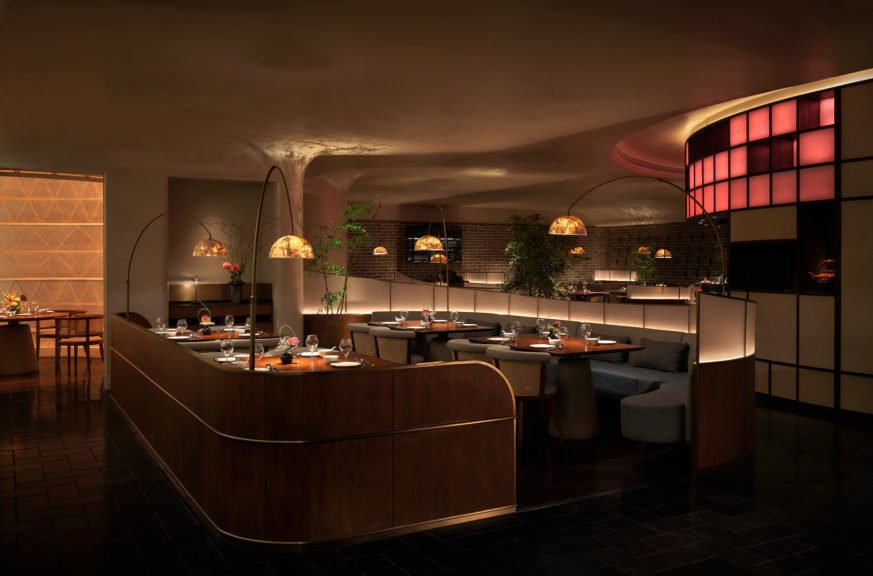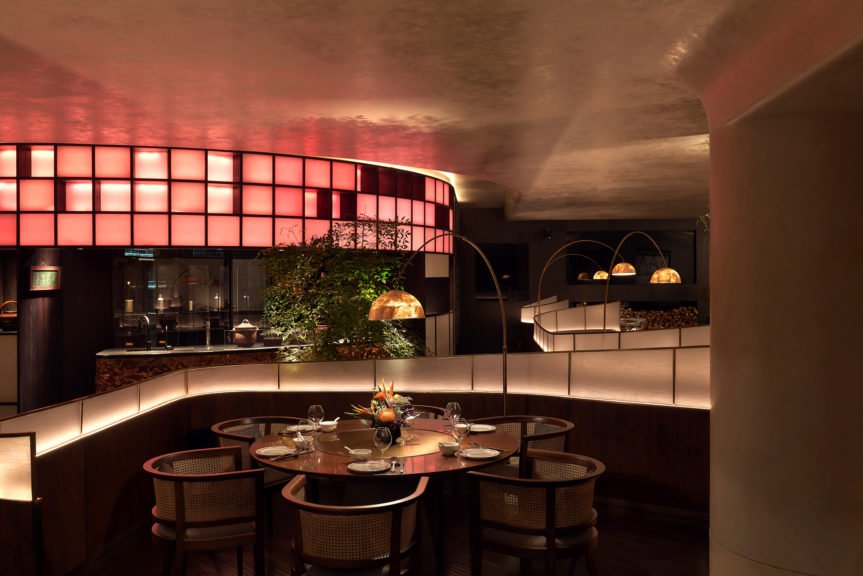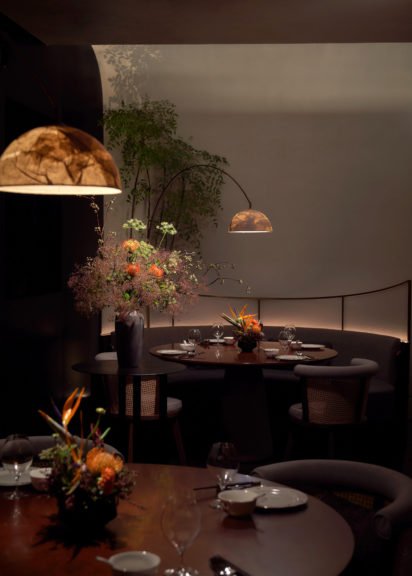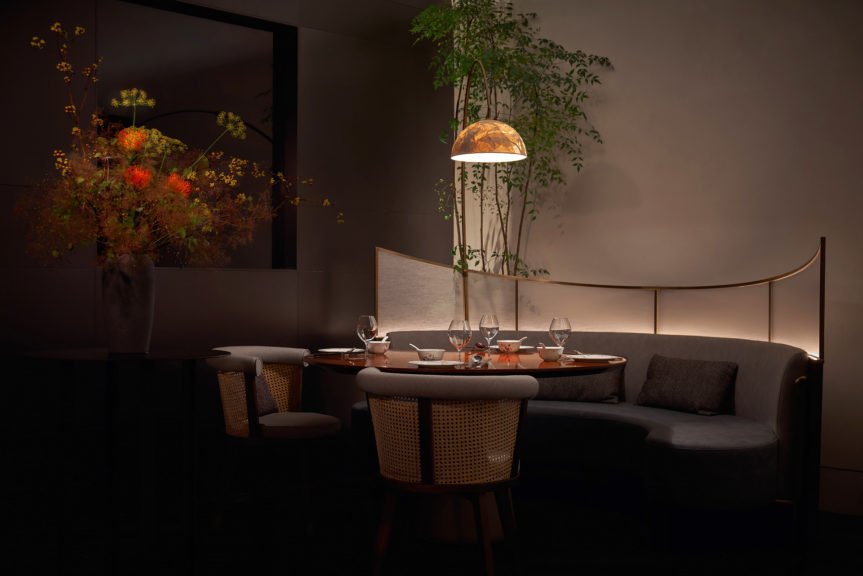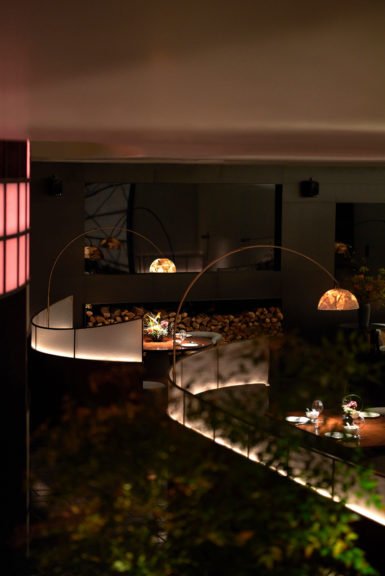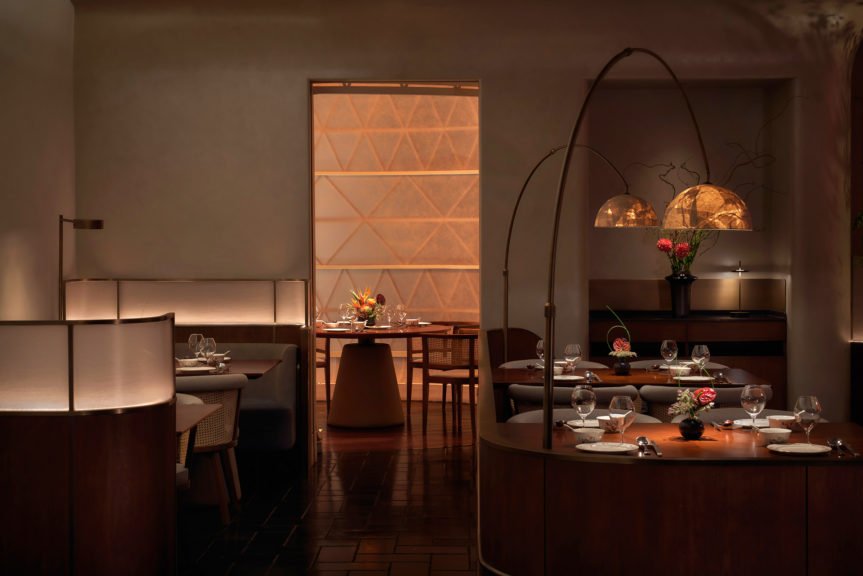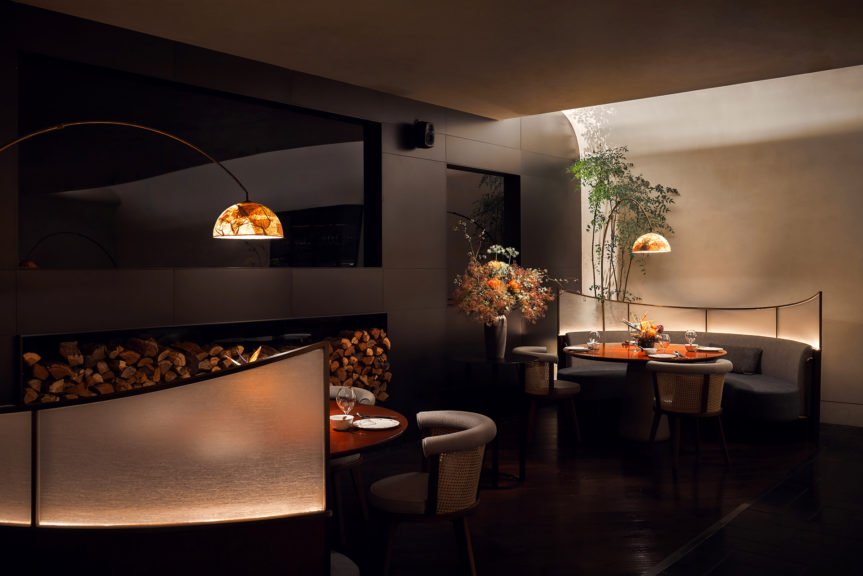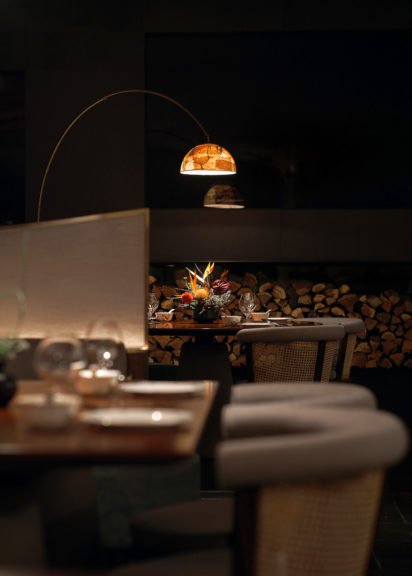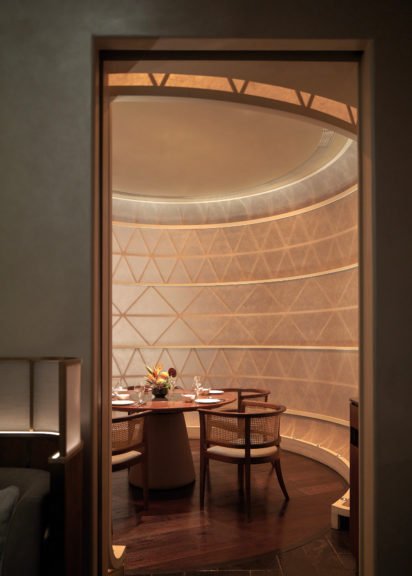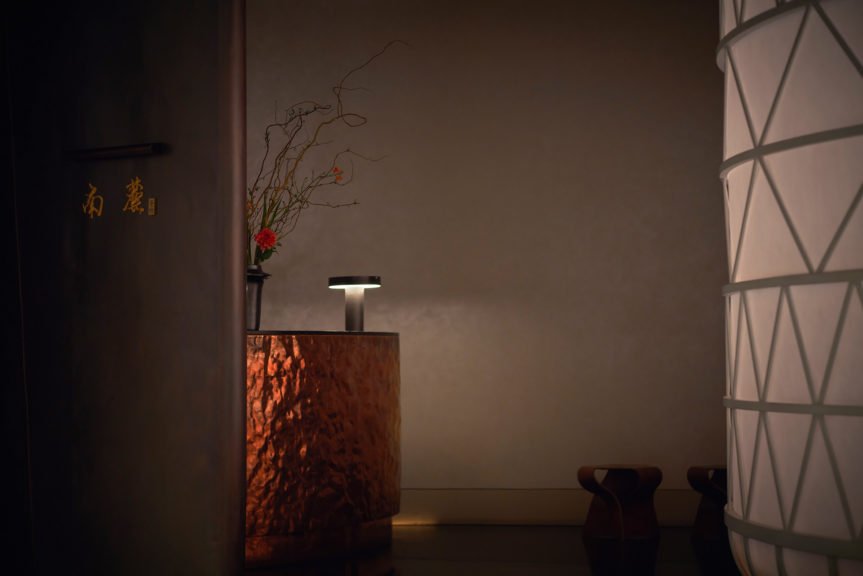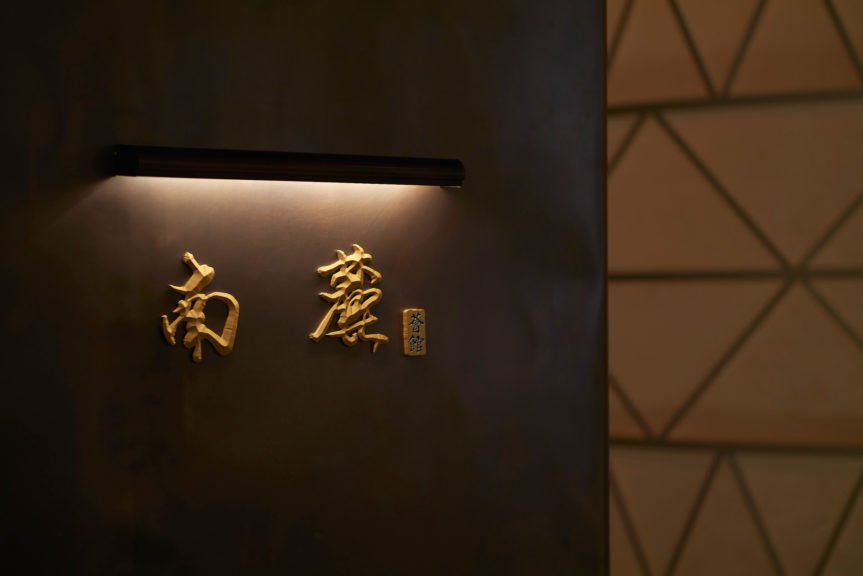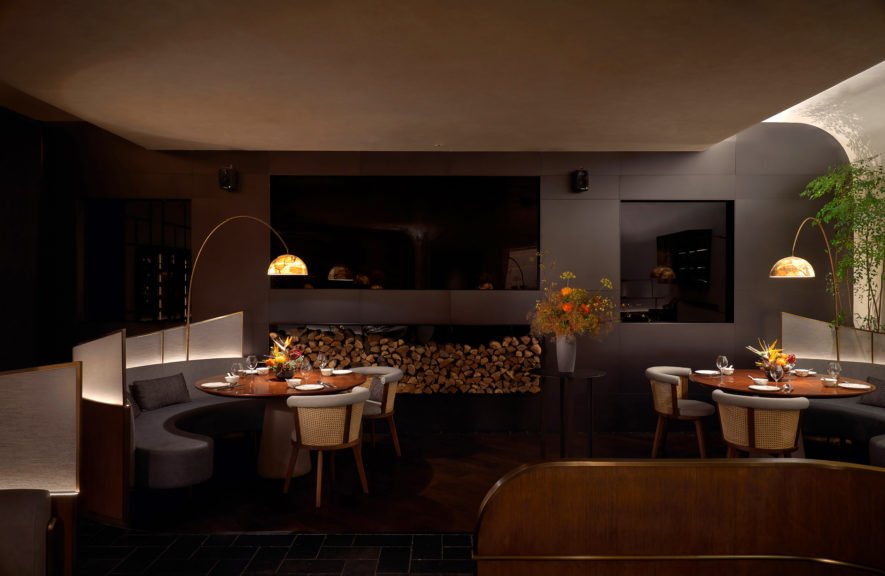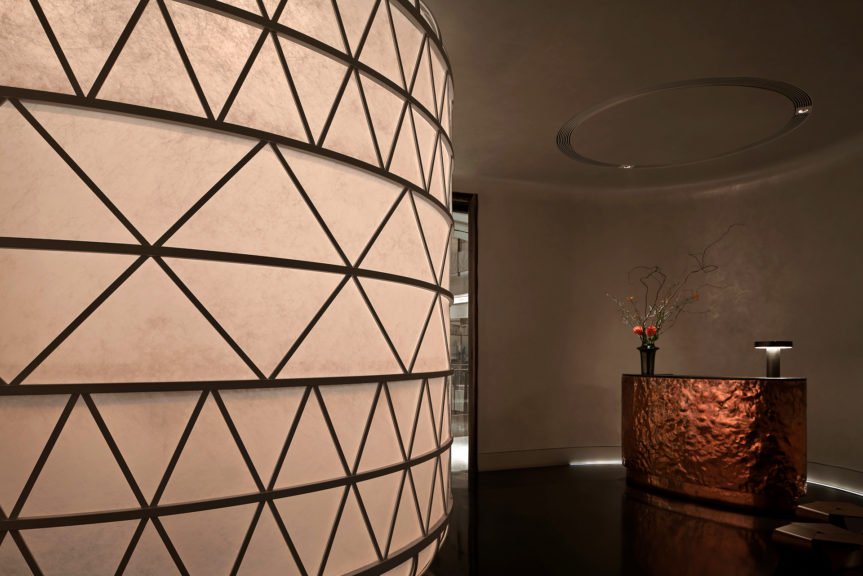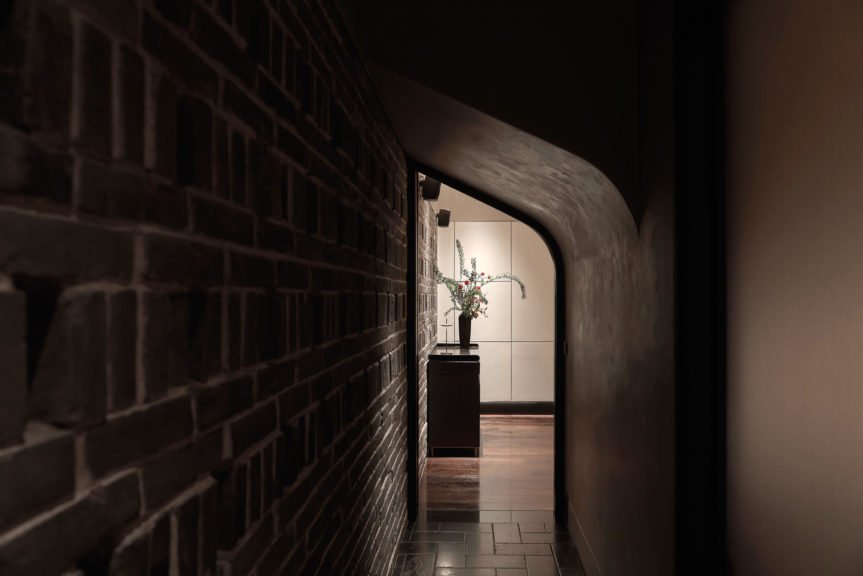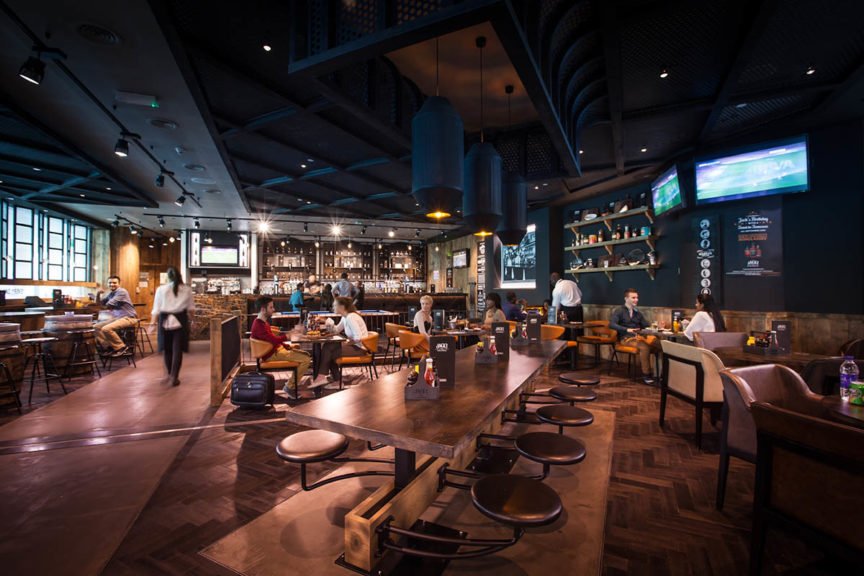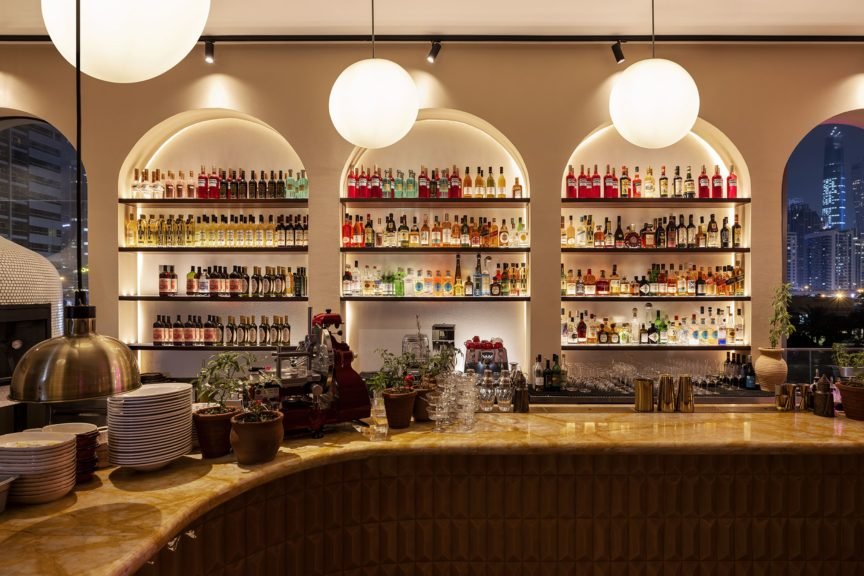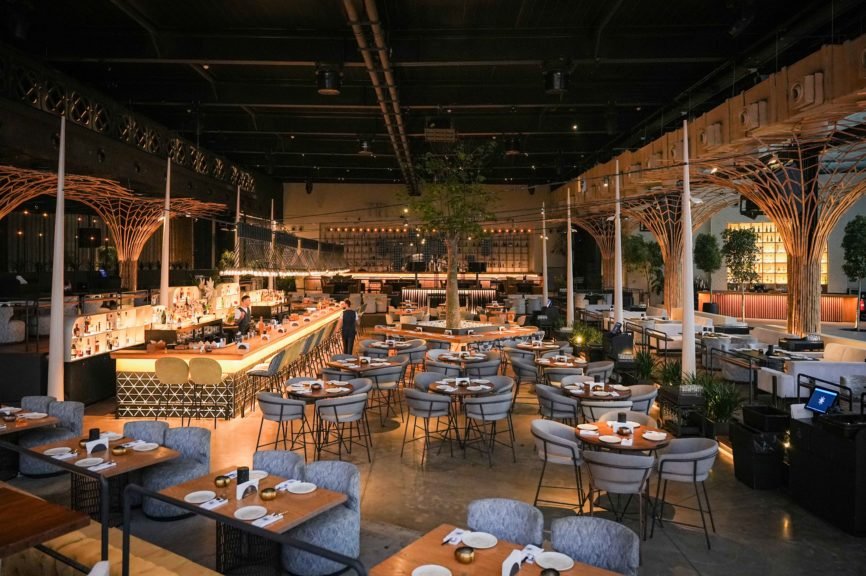About the project
Cut the ham with its casing into chunks and simmer them with mead until they are tender… I ate once in Yin Jishan’s residence in Suzhou. The dish tasted sweet and fresh, whose aroma could be sensed from neighbourhood. After that, I never encounter such a scrumptious dish again.” ——An introduction of the Braised Ham in Honey Sauce from the book “The Way of Eating :Yuan Mei’s Manual of Gastronomy”
Nanlu Huiguan, a new location of an established Michelin restaurant, ended its hibernation during pandemic in March, 2022. Among the brightly lit shops in Shanghai International Financial Center mall, the entrance of the restaurant gives off soft yellow light through a scaled-up lantern shaped in a half circle. Wang Daquan, the chief designer of TANZO Space Design, is responsible for the interior design of the restaurant and Fitted out is done by Shanghai Choyoin Construction Group Co., Ltd., which took him five months to complete the project.
“My impression of Hangzhou is that the city likes a pool of water, a delicate one among mountains and plains. The same idea goes to the design for Nanlu, from which a sense of tranquility and humility emanates. When diners walk in the restaurant, the aroma greets their nose, immersing them in a sense of rustic simplicity.”——Wang Daquan
Nanlu Zheli opened for business on Julu Road in Shanghai 12 years ago. Later, it opened a second location on North Sichuan Road and was awarded as a Michelin-starred restaurant. This restaurant which serves authentic Hangzhou dishes rode the waves frequently in the Shanghai dining industry.
Inheriting the high standard of ingredient selection and service, the chef team of Nanlu Huiguan comes from Hubin 28 and Jie Xiang Lou, famous local restaurants in Hangzhou. By exploring the local chronicles of Jiangsu and Zhejiang area deeply, the dishes served in the restaurant are real local flavors and the atmosphere in the restaurant resonates with a typical elegance of the landscape in that area – hot dishes are served, and new stories are told
Tracing back and returning to the origins
Shanghai and Hangzhou have been inseparable since ancient times.
The cultural root of Nanlu Huiguan stems from the confrontation and interdependency of the two cities. Shanghai has an ambiguous vibe with the ups and downs of the city history. While the city vibe of Hangzhou resembles the juxtaposition of the West Lake and the canal that no matter how busy the river transport of business is, the tranquility and clearness of the scenery remain unchanged.
Bearing these in mind, the designer traces back to the traditions along the urban context, and pursues modern expressions in the design of Nanlu Huiguan by taking advantage of folk art and nature – “As darkness falls, the gauze lanterns are lit up in the west corridor of the yard in a forest.” (A verse from a Chinese poem). The space frames the scenery of the village, the water and the moonlight. The designer presents the space in an austere and sincere way by confirming first and foremost that the brand gene originates from nature and real life, just like people insisting that regional cuisines have their certain flavors.
Travelers, no matter where their hometown is, can unwind themselves in front of the West Lake and have a kind of heartfelt companionship and attachment. It is not just in Shanghai or Hangzhou that this kind of homesickness which transcends geographical scope occurs. The closeness, being a transcendental feeling of Chinese people, enables the spacial experience to become a return to a collective memory and origins.
Differentiated scenariosA fusion of natural beauty and daily life
When lanterns are made, the thickness of bamboo strips is determined by the size of lanterns, which can be as thin as hair and as thick as chopsticks. At the entrance of Nanlu Huiguan, the lantern is scaled up to 3.96 meters in height and 3.1 meters in diameter, surrounding a round table of six people. The soft light resembles moonlight, shining through the lantern. When you detour inside, the smell of cooking strikes you.
The cambered walls and roof cover the whole space smoothly. Translucent resin plates framed by copper strips partition the space, which likes microcosmic courtyards among mountain ranges, allowing tipsy diners to whisper and enjoy meals in separated areas. Covered with paper, the lampshade of floor lamps scatters the light dimly, resembling a natural scene that“the moon is blocked by mist.” By creating a sense of blurred beauty, the space design slightly interferes with people’s intuitive feelings for light, seat and food, aiming to leave a space for diners themselves to place emotions and experience the surroundings.
Opposite the entrance, the LED light box above the tea bar shines in orange, the color of sunset; a relief plaque on which Master Hongyi writes “Hua Xiang Pu Bi”(Chinese characters meaning that the aroma greets the nose) hangs on the wooden wall; a curve-shaped bar is wrapped in handmade brass. It seems that the whole setting is etched in gold ink. As early as the Southern Song Dynasty, Wu Zimu wrote in his book Menglianglu that he marveled at the flourishing business in Hangzhou, “From Hening gate to Guan bridge, every single shop along the way runs business.” Nowadays, the tea stalls have stepped onto the modern stage from the agricultural age. “”Futian”” becomes two-dimensional lines with a style of neoplasticism on the LED light box which changes its colors, comforting viewers’ endless thoughts in a warm and magic way.
Catering to the need of people
Like any kind of art, food caters to people’s need ultimately. Nanlu is no exception, but it can achieve this goal with less effort by using the space as a leverage. No matter where you are in the space, the textures and vibes are always on the same page, which is a sense coming after the internalization of urban memory and cultural context: the space is rich in details but emanates a rustic feeling; people feel tipsy and at ease in it.
The size and material of the lantern have been adjusted repeatedly so as to obtain the best transmission of light. Matching it, the indoor lighting is infinitely close to natural light, so that the perception of daylight, moonlight, candlelight and other light sources reaches a balance, allowing diners to feel out in nature rather than indoors. Wild plants grow freely, being tall and lush. From bamboo, paper, and wood to gold bricks and artistic paint, rich textures in the space form a vibe resonating with emotions, which injects a sense of vitality into the space while constantly penetrating, projecting and floating with light.
In addition, the designer carefully reconsiders the size and comfort of the furniture and makes localization improvements. The European style and prints of tableware remind people of the old days. In the space, whether it is the scaled-up lantern and fireplace or the scaled-down courtyards, people can feel carefree and leisurely while walking through them.
There are many restaurants serving good wine in Shanghai, while Nanlu Huiguan serves yellow rice wine (native to Zhejiang province). This is not only a brand strategy, but also demonstrates cultural inheritance through the space and products.
Situated in Shanghai where business and restaurants are prosperous, Nanlu Huiguan has been staying true to rusticity and sincerity inherited from the past when it was a small restaurant. Meanwhile, the ingredient selection and tastes of food have always been under quality control. The space emerges out of tradition and takes root in the historical context of the city and people. The memories and emotions aroused in the space will make our hometown and its taste never fade away.
Products Featured
Project info
Industry:
Size:
Country:
City:
Completed On:
Community
Interior Designers:

